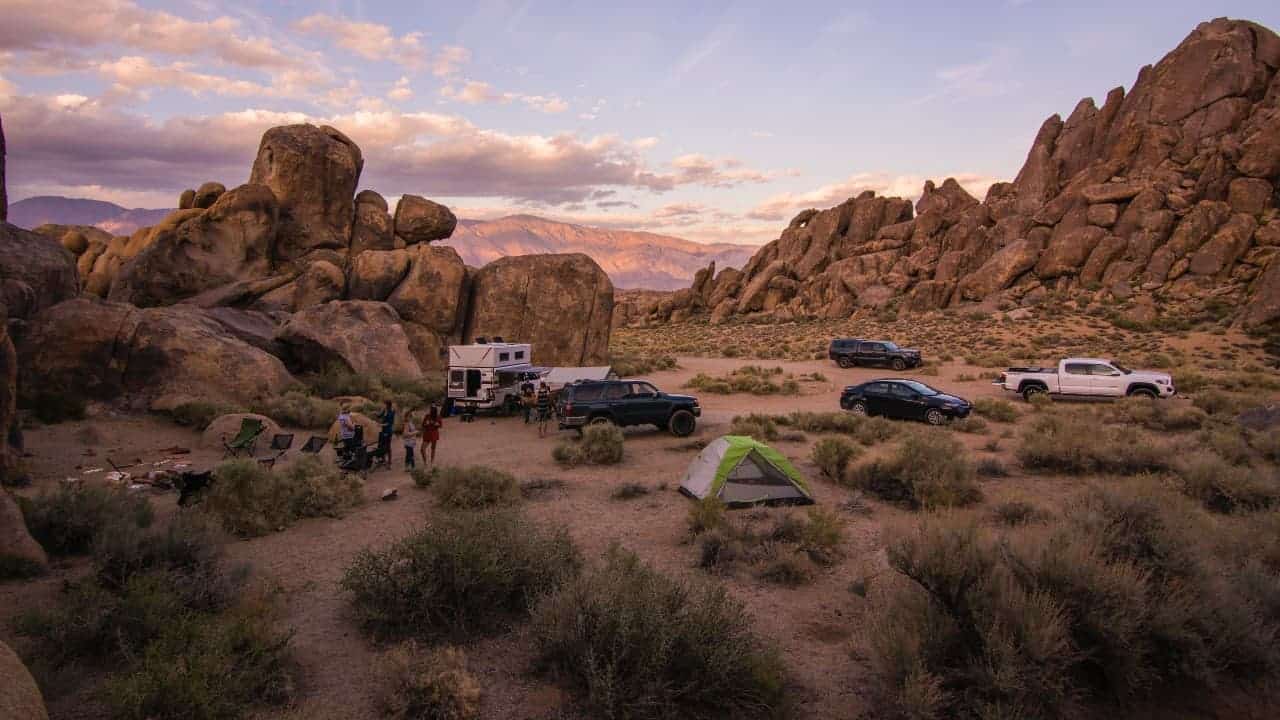In the days of yore, setting up a camp in the middle of a forest had a clear purpose.
En route to a faraway pelt-trading outpost, with your cart laden with the finest raccoon fur, camping meant avoiding getting soaked by the elements, eaten by a bear, or both.
Nowadays, the raccoon pelt is readily available for trade online (if anyone even buys hides in their untampered-with form anymore), and camping is more of a leisurely activity. You go camping to relax, photograph, and get in touch with the surrounding nature that modern generations have to relearn how to admire and respect.
And one of the best ways to do that is through dispersed camping. An extraordinary and unique approach to camping, dispersed camping can be a great way to learn about yourself and just how engaging and exciting spending time in nature can be.
Dispersed or Free Camping
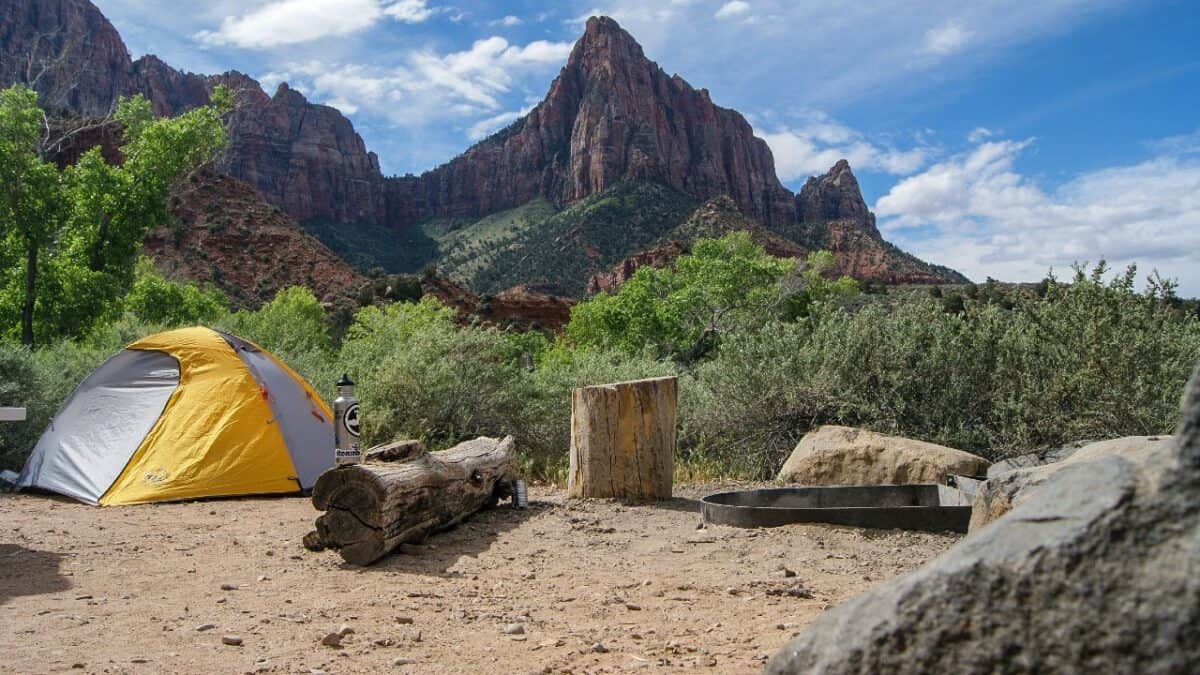
Also known as free camping and primitive camping, dispersed camping represents a way of camping on locations outside of specifically designated camping spots.
This does not mean dispersed campers do not bring anything with them, which is often the wrong impression when someone hears ‘wild’ camping. On the contrary, dispersed campers are probably some of the best-equipped campers out there since pitching a tent or parking an RV outside of camping spots that are in the wild typically means having little to no amenities at your disposal.
Speaking of RV-ing, dispersed camping is not limited to only tents or walking around on foot. You can find many car and RV-friendly camping spots near rivers, streams, forest paths, trails, and even busy interstate highways. For this reason, RV-friendly pull outs are a common choice of location for many campers whose tent is on wheels.
Until recently, Walmart had a rule allowing anyone to park freely in their parking lot and use it as a de-facto campground. (This goes for vehicles only, though.) Dispersed camping is possible in urban areas, too.
Another great thing about dispersed camping would be its low cost. For a fantastic dispersed camping trip, you only need food, water, and some gas. Everything else you can haul is a plus.
Dispersed Camping Compared to Other Types of Camping
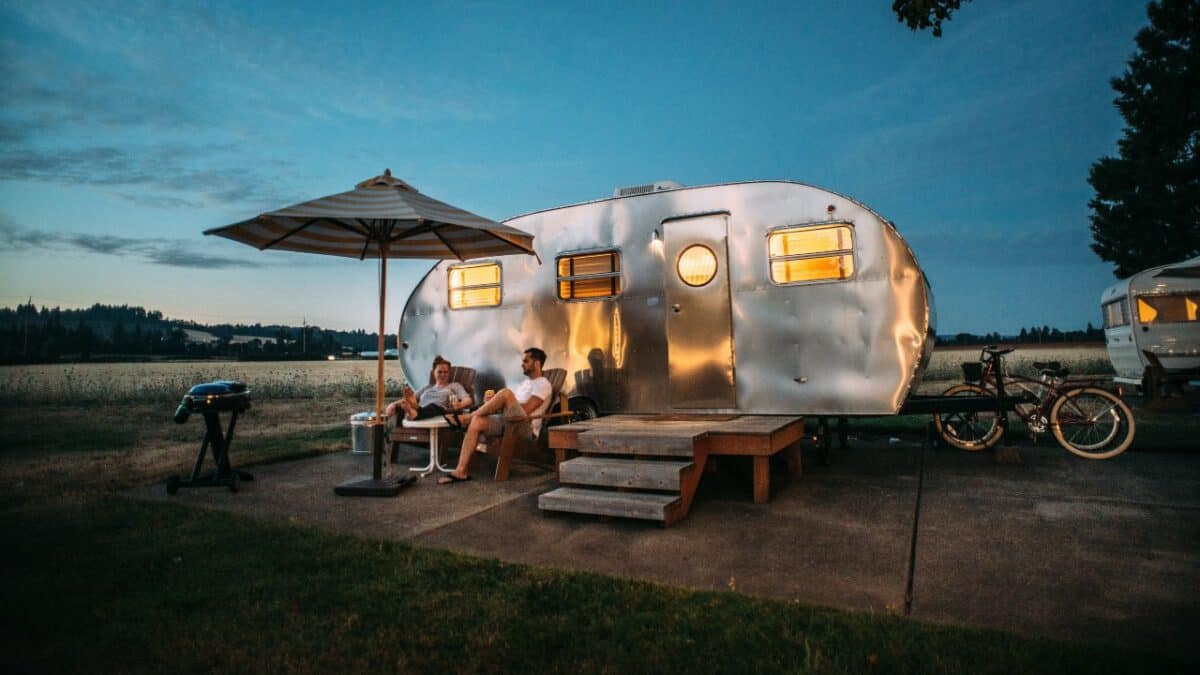
Since camping is not a necessity anymore, the rules of camping have changed, and many different approaches have emerged to what it means to camp and what the reasoning behind camping is in the first place.
Some people like to ‘glamp.’
The so-called glamorous camping merges the best of both worlds – the civilian’s world of plenty and the rugged outdoors world that’s rough but also beautiful beyond comparison. (Truly, nothing humans can come up with can ever measure up to the beauty of nature.)
Alternatively, there’s the RV full-timer community. Or, not even necessarily full-timers, just regular RV camping enthusiasts.
These modern-day motorized nomads strive to capture the essence of freedom by constantly being on the move. As far as RV camping goes, it makes sense as a motorized home is pretty much a tent on wheels, so why not use this for camping purposes?
There are indeed many types of campers out there, and while each approach to camping makes sense, possibly the closest camping method to the original one can be observed with the dispersed camping community.
In the section below, we’ll talk in more detail about finding the best dispersed camping spots for your preferred camping style.
How to Find Dispersed Campsites?
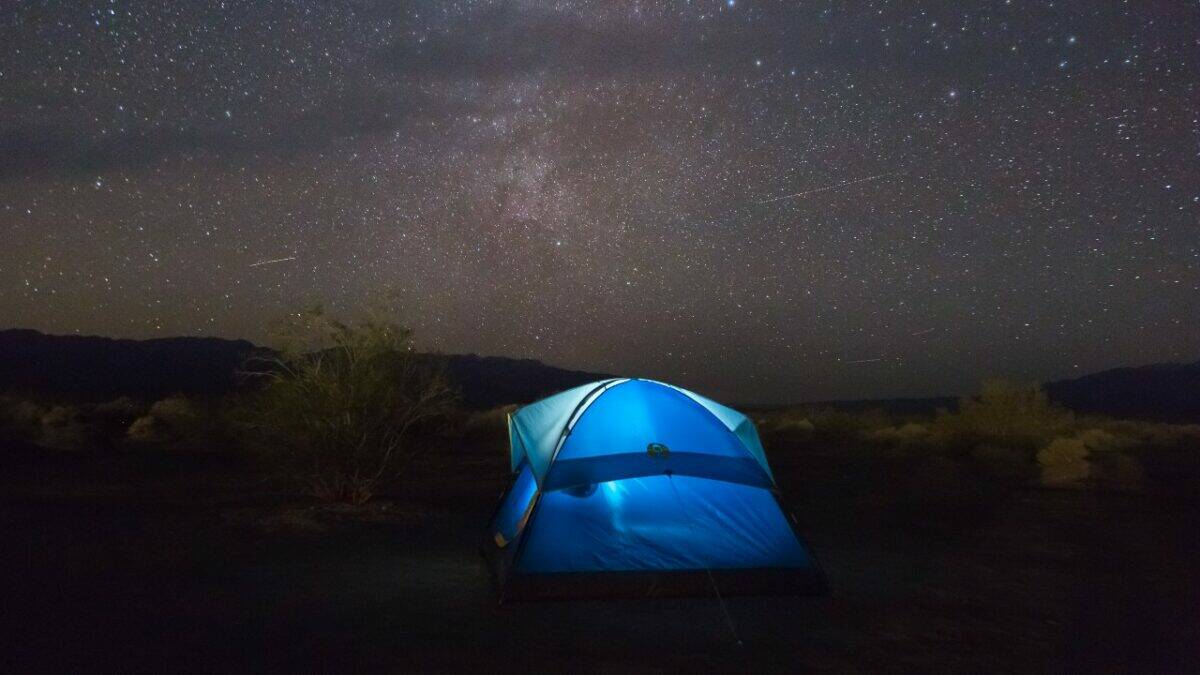
While finding dispersed campsites is technically an easy enough feat since all you need to do is ensure the place is not in private ownership or prohibited access, finding the excellent ones takes a bit of research.
First off, what you want to learn is what’s the organization in charge of the piece of land you’re looking to camp on. Nine times out of ten, it’s either the BLM or the USFS. But we’ll discuss these at length in some of the passages below.
A great place to start the search for the perfect camping spots for you would be to look online. Here are the best dispersed camping apps that can help you with this:
Freecampsites.com – Representing an app with a relatively simple interface but with excellent in-depth filters that can help you find exactly the kind of camping spot for your needs with pinpoint accuracy, Freecampsites.com can be the perfect tool to start your campsite search.
For example, some of the filters you can make good use of include the kind of roads accessible there and the different types of amenities present (BBQ grills, dumps stations, trash cans, showers, pet-friendly, containing kid-friendly playgrounds, fire rings, horse corrals, and more).
Also, this app lets you know if the campsite you’re looking at is a dispersed one, pay-to-camp, or if it requires a special permit.
Campendium – Developed with predominantly RV campers in mind, Campendium is a website where you can easily find some genuinely excellent camping spots.
Some of the research categories this website specializes in include RV parks, National parks, State parks, free camping spots (which can be an instrumental category for dispersed campers), and camping news.
TheDyrt – Based on user reviews, TheDyrt is a go-to camping app for many different campers. Whether you’re into glamping, RV-ing, fishing & camping, horseback riding & camping, or simply reading about camping and related topics, TheDyrt has good coverage (To be more precise, the community of campers who leave their reviews on this platform is the primary source of information.)
To help you find an ideal dispersed camping spot for your next adventure, we’ve put together a few detailed guides:
Land-Managing Organizations That Allow Dispersed Camping
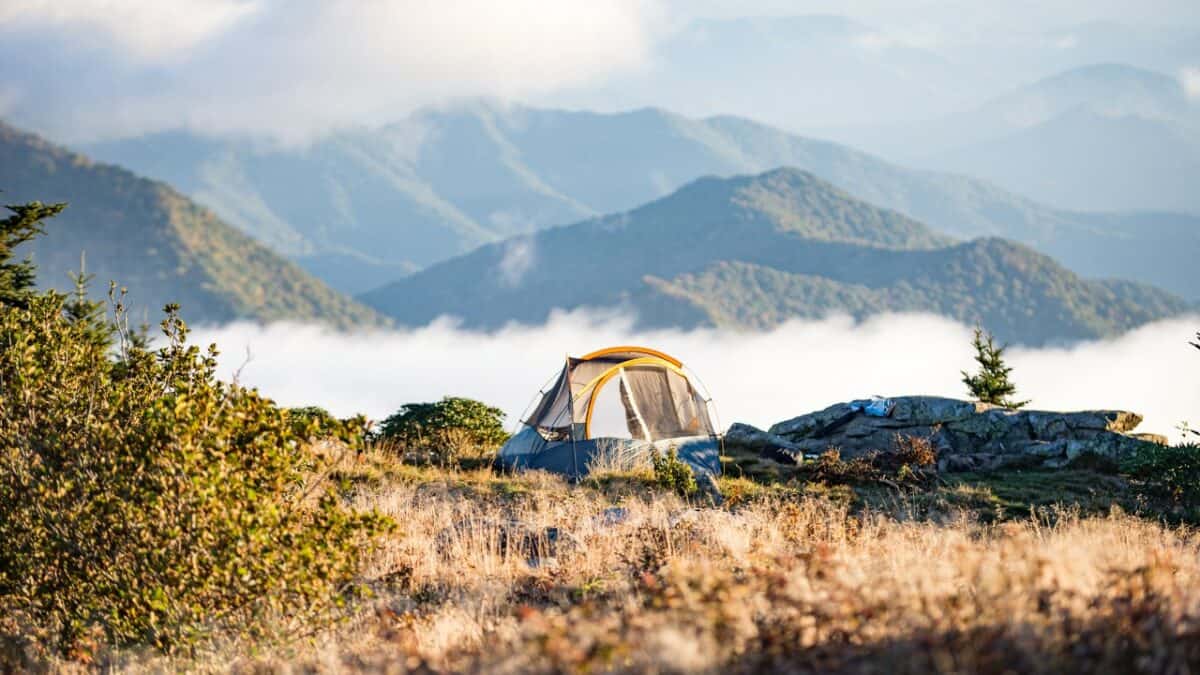
While most of the US and the world are notably empty of humans and buildings, much of it is nevertheless in someone’s ownership.
Whether it’s the local authorities, the country, or private owners, when it comes to camping – no matter how uninhabited a place is, there’s always an owner involved.
Regarding the US, the owner is typically the BLM or the USFS. These two organizations own vast amounts of American territory, so it’s no wonder that many of the best camping spots are under their jurisdiction.
Alternatively, sometimes the land suitable for dispersed camping is owned by a third party, such as the individual state the land is in or some other organization. Patches of land within a state can be under a special trust, especially if the state in question is sparsely populated and the resources the organization gathers go to public spending. (The Arizona State Land Trust would be the perfect example of this.)
As you will see, the rules that the organizations in question impose are reasonably lax, easy to understand, and uniform, so you won’t have to worry about having to hack through a lot of red tapes and paperwork to go camping somewhere in the US.
BLM (Bureau of Land Management)
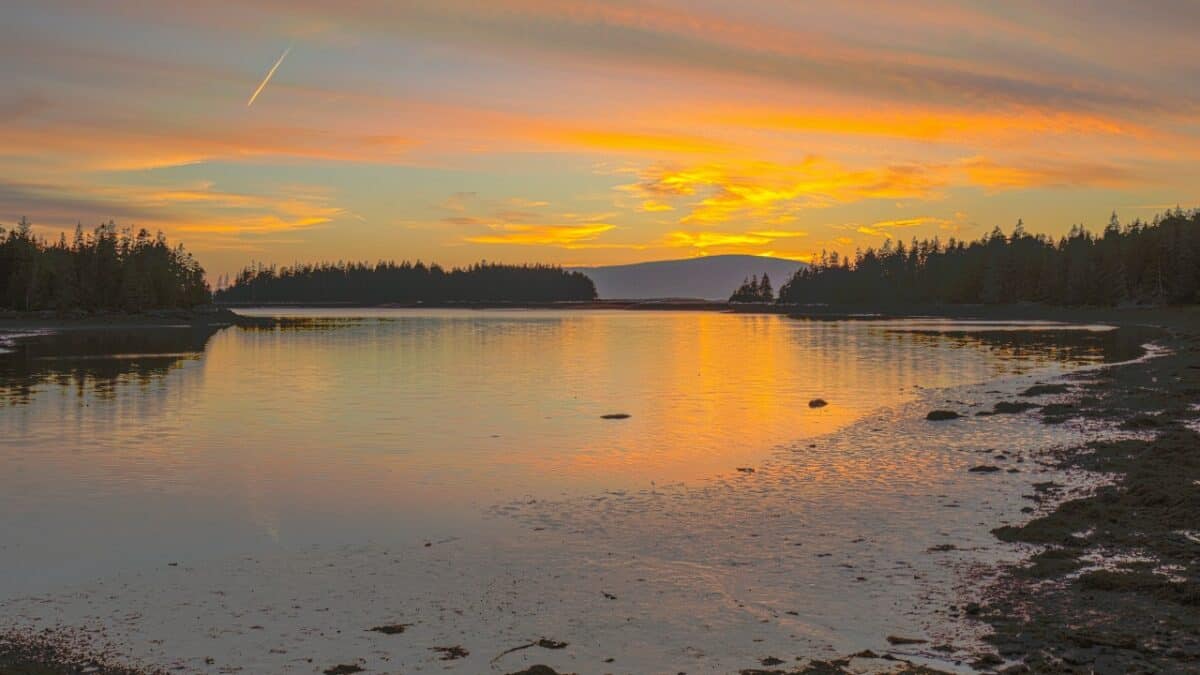
The BLM is a massive organization that manages one-tenth of all the land in the US.
Here, you can count every possible piece of terrain – from arctic tundra, rangelands, deserts, forests, mountains, oceanfront, and many others. If you want to learn more about BLM’s activities in detail, you can find more info on their official website.
The primary mission of the BLM is to preserve the land they oversee, use some of it for renewable energy initiatives, and preserve the natural and historical beauty of some culturally-relevant regions.
Most interestingly for would-be dispersed campers, though, the BLM offers much of its land to free camping – as long as you stick to its central principles of dispersed camping.
Here are some of the most critical pieces of information regarding dispersed camping rules & regulations imposed by the BLM:
- Most public lands overseen by the BLM are open to dispersed camping as long as the areas in question are not a part of a developed campground or have some other limitation due to weather or other reasons.
- Within a month, you can camp at a single location for no more than 14 days. You can use those days in bulk or camp for a couple of days at a time at the exact location – as long as the total number of days camped is not over 14.
- Once the 14 days have elapsed, you can continue camping on BLM land, but you must move at least 25 miles from the original campsite.
- Campers are encouraged to use campsites that were already in use before.
- If the camping area is close to a developed water source, you must not camp closer than 200 feet.
- If possible, use existing fire rings and camp stoves.
- Pack out your garbage, and don’t leave any trash behind when you leave a campsite.
- If there is no toilet, use a port-a-potty or portable latrine.
- If you don’t own a portable lavatory, you must bury your waste in a hole in the ground at least six to eight inches deep. This whole also needs to be at least 200 feet away from a water source.
- Stay updated on the current wildfire situation in the camping area you’re visiting.
- A general rule of thumb for finding dispersed camping spots is veering some 100 feet from existing vehicle ways, roads, and forest trails.
USFS (United States Forest Service)
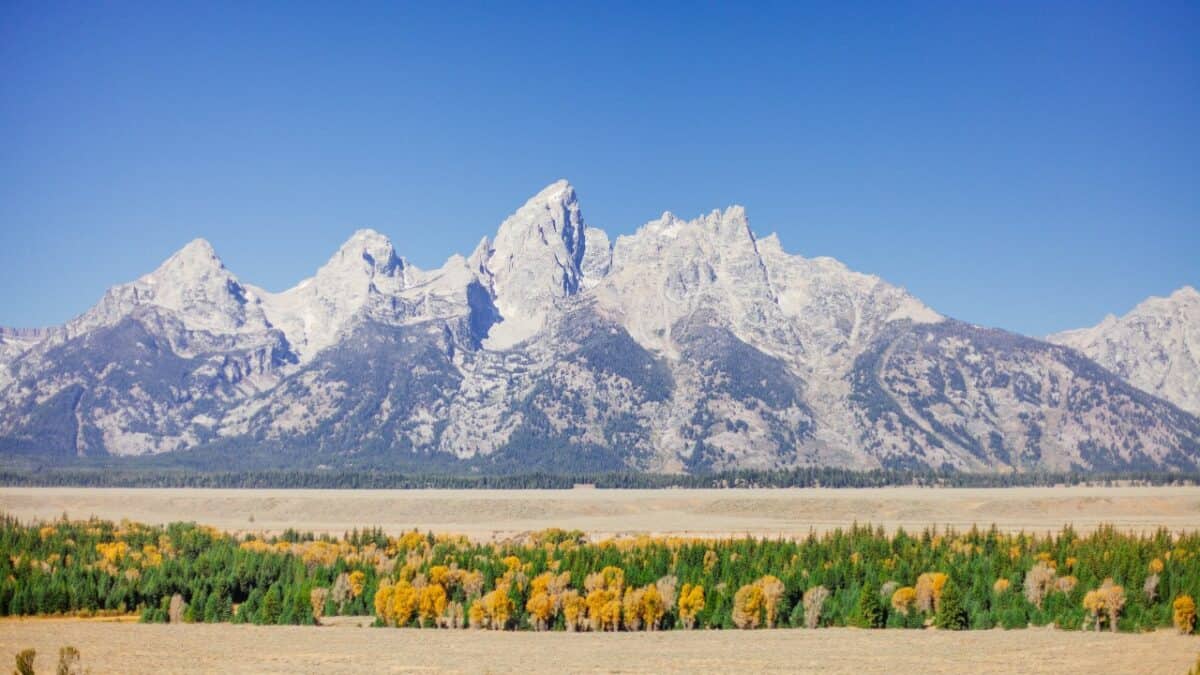
The USFS represents a giant organization that employs over 30,000 people across the United States.
As its name suggests, this organization’s primary goal is to take good care of the country’s forests. These include wildfire prevention, taking care of invasive species, planning and executing new tree-planting efforts, and issuing camping rules and regulations for camping and other forms of recreation.
You can find out more on their official website if you want to acquaint yourself with some of their many outdoor pursuits and activities. Also, they have a subsidiary website called Recreation.gov, where you can learn about various forms of recreation in more detail.
An important thing about the USFS regarding campers, bikers, and other moto and extreme sports aficionados is that this organization is also in charge of making the MVUMs (Motor Vehicle Use Maps).
You can download these incredibly detailed maps for free, get a real-life copy at a USFS local office, or request a unique georeferenced map.
Also, the USFS makes other kinds of maps, such as tourist guides, brochures, topographic maps, wilderness maps, and many different specialized types of maps. (You can look for specific maps using their official Map Finder, by the way.)
Other Organizations
Other than these two major organizations, in your search for a camping spot, you will occasionally chance upon some third authority that doesn’t necessarily belong to either.
For example, various state forests, notable land trust organizations (such as the Arizona one we mentioned above), and others have jurisdiction over some of the land.
Often, Land Trust organizations, for example, require special permits for them to allow you to camp on their land. These permits are typically inexpensive, but you must be ready to show them to authorities if necessary. In such cases, the best course of action is to acquaint yourself with these organizations’ rules and regulations.
What to Bring to a Dispersed Camping Trip?
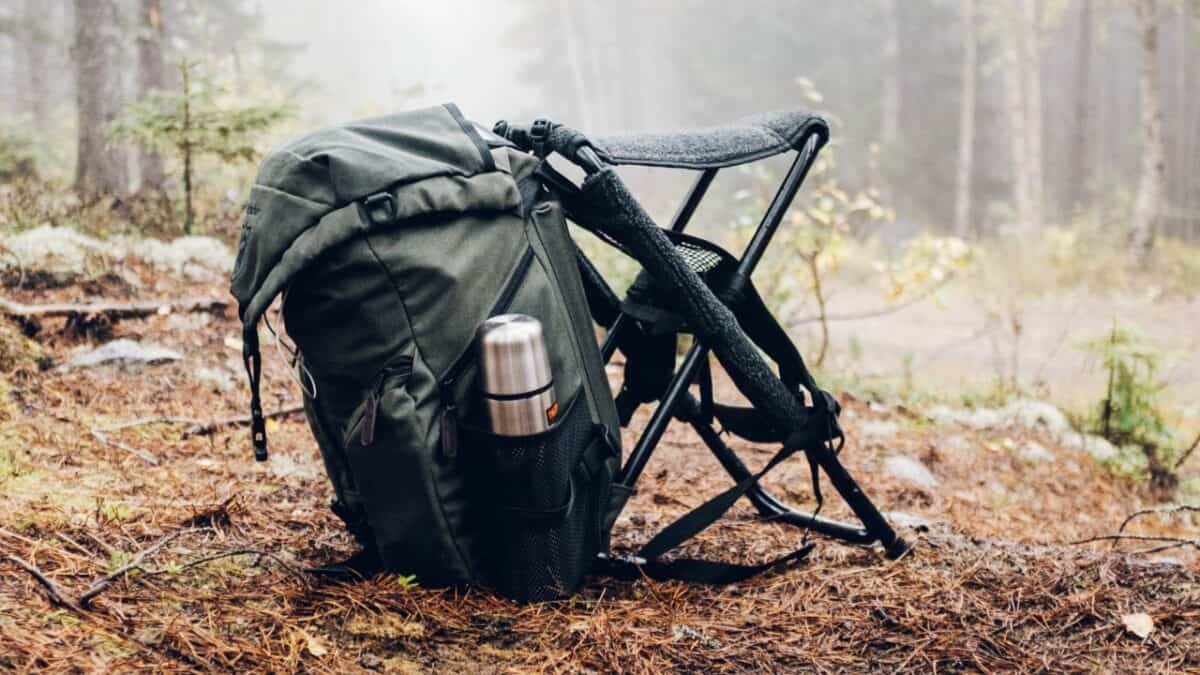
When it comes to free or dispersed camping, as it’s sometimes known, the wrong assumption that many people have is that it’s a minimalistic type of camping where you don’t bring much with you.
This idea, though, couldn’t be farther from what dispersed camping is like in reality.
Now, while free camping is not precisely glamping, it is vital for a dispersed camper to carry potable water, the essential camping equipment, as well as a port-a-potty or two if possible. Of course, this is merely a beginner’s list of items you might need for a successful camping excursion.
What you bring will depend on what sort of area you’re visiting. Generally speaking, a typical to-bring dispersed camping list includes a tent, hammock, portable stove, portable fridge, hiking gear, fishing tackle, warm clothes, or sleeping bag – what you bring is your prerogative. The list goes on: radio, sat-nav, kayaks, flashlights, Swiss army knives, ax, water filtration gadgets, solar-powered battery chargers, and so on.
Leave no Trace Principles
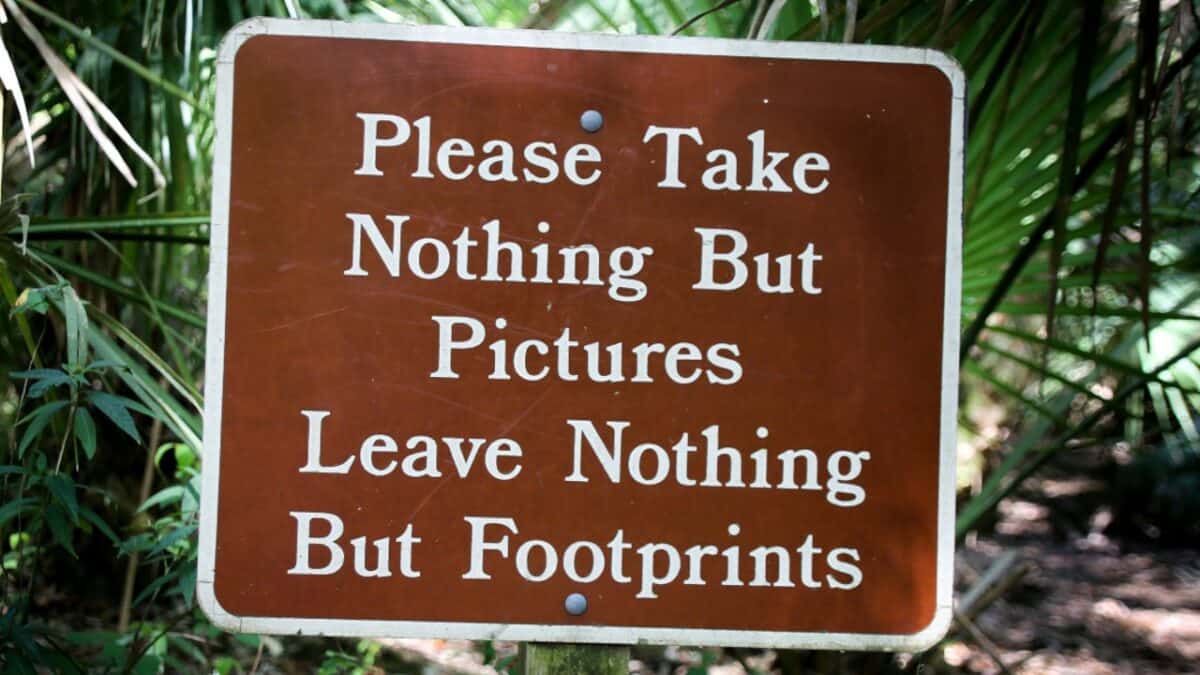
As its name suggests, the ‘Leave no Trace’ approach to camping aims to minimize the effects of camping on the environment.
Initially, a simple unwritten set of rules, the ‘Leave no Trace‘ became somewhat of a canon in the camping community, as it precisely and directly pinpoints what camping should be. The goals of this organization are not only to help save the planet but also to make camping more fun and to leave the wilderness as intact as possible for future generations of young and crafty scouts and campers.
Additionally, camping this way tends to be a tad more complicated than engaging in a regular camping trip, but this makes it all the more fun, too.
The beauty of Leave no Trace principles is in their simplicity. There are seven of these camping rules:
Plan Ahead & Prepare
One of the best ways to prepare for a camping trip would be to do your homework online and offline and gather as many valuable pieces of information as possible.
I recommend arriving at your camping spot well ahead of time (because with dispersed camping spots, you don’t get to book campsites) and bringing all the necessary camping items and at least essential consumables (food & water). It can mean the difference between having the time of your life at your newly-discovered campsite and leaving early because of dehydration and odd diseases.
Luckily for anyone who wants to do this research, the Internet is full of websites describing the great many camping spots people have already visited and took their time to document their experiences in detail.
Travel & Camp on Durable Surfaces
When you head out into the wilderness to find the best camping spots for having a blast of a stay and taking a bunch of incredible photos, you might get tempted to set up your tent in an area that isn’t suitable for camping.
For example, the BLM discourages camping in the middle of an open field – no matter how empty and scenic the area is.
This unwritten rule is because your presence there can ruin the scenery for other campers, tourists, and visitors. Also, the tents and equipment can damage the soft grass, which is at odds with the ‘Leave no Trace’ camping principles.
The correct way to do this, thus, is to camp on solid soil, gravel, rock, or any surface that will not leave the environment worse once you go.
Practice Proper Waste Disposal
As far as fecal and organic waste is concerned, the way would be to bury it in a hole at least six to eight inches deep – at least 200 feet away from a water source. Alternatively, you can bring a port-a-potty along or some other type of portable restroom. In this case, you would get that waste with you when you leave and dispose of it later.
For non-organic garbage such as plastic bags and similar items – carrying it with you in garbage bags can be an easy way to pack the unwanted stuff and get rid of it outside the camping area.
Leave What You Find
Whether it’s picnic tables, fire circles, trash cans, or even something much more valuable as a cave drawing – don’t alter anything you find on campsites you visit.
This principle also works the other way around, by the way.
As a camper enjoying their stay at a camping spot, you may feel the temptation to make the place cozier by building an impromptu picnic table and some chairs out of old branches.
Now, even though this may come across as a counterintuitive piece of advice, the reasoning behind it is that you want to leave the area you’re visiting untouched as it was when you first discovered it.
Minimize Campfire Impacts
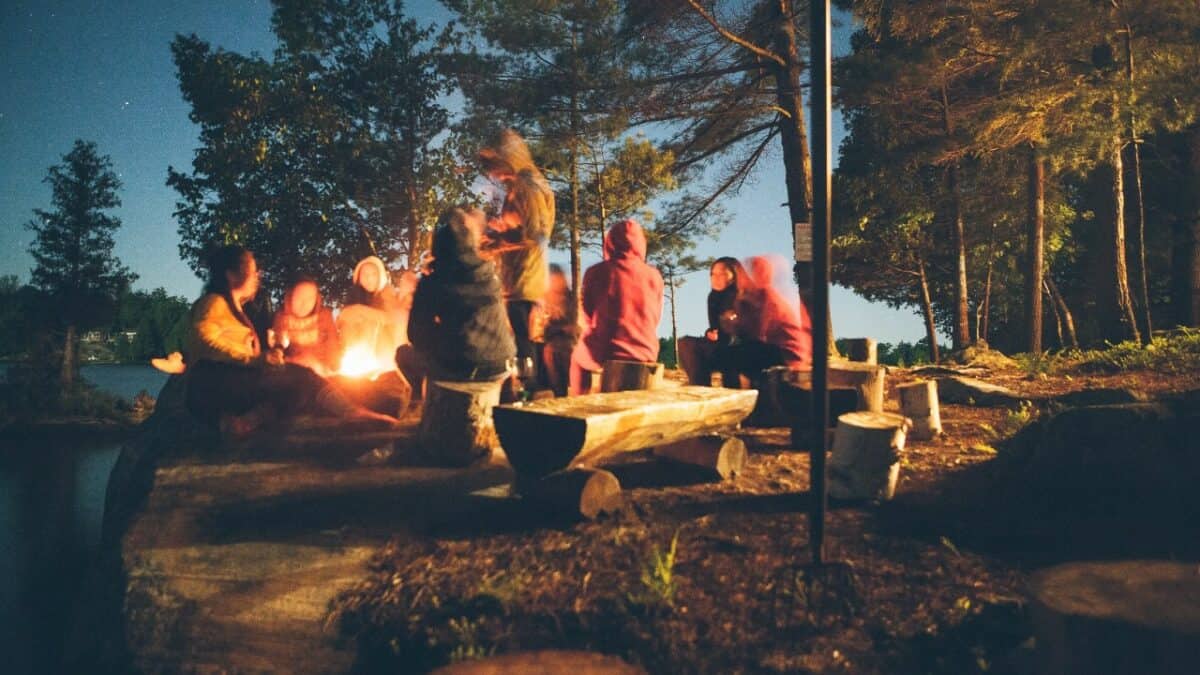
Wildfires represent a potent seasonal threat in many parts of the US and the world.
Forest fires represent nature’s way of reinvigorating some of its ecosystems, so there is no way to prevent them entirely.
That said, it is imperative to let organizations such as the USFS manage forest fires in a controlled and professional fashion.
Unfortunately, rather than being the result of a controlled deforestation plan put forth and executed by the USFS, for example, many lethal and damaging forest fires are caused by campers that weren’t cautious enough.
For this reason, always put out your campfire before leaving your campground.
Respect Wildlife
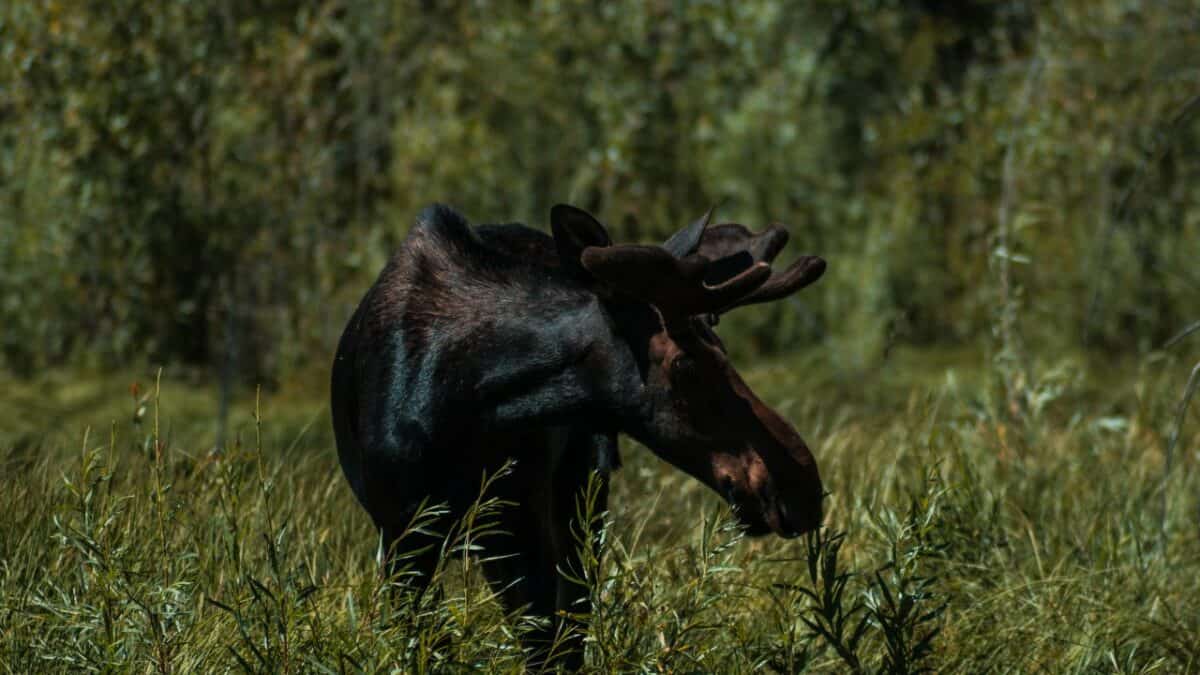
Please don’t tamper with animals present by trying to tame them, feed them, hunt them, or domesticize them.
Essentially, what ‘Leave no Trace’ means in a wildlife context is that you should assume the role of a wildlife photographer, like those that work for Discovery channel or Nat Geo.
Do not attempt to interfere with the local animals in any way whatsoever. After you leave, ideally, the place should feel as if you had never visited it in the first place.
- Be Respectful and Considerate of Other Campers and Visitors
Although the vast territory is open to dispersed camping, some spots are more popular than others.
So, if you’ve found a particularly excellent camping spot, chances are – you’re not the only one who likes camping there.
For this reason, make sure to respect the other campers present where you are so that every party present can have a fun time.
If you want to learn about the Leave no Trace principles in more detail, you can always visit the official website of this organization.
Conclusion
Camping is as old as heading out of your village to see if you can catch that runaway boar or pick a basketful of those extra-tasty berries from the forest.
Spending time in nature and relearning how to appreciate its beauty, wilderness, and quiet and tempestuous side helps us understand the world we live in and ourselves in a better and more profound way.
A feeling of freedom, connection with nature, and tranquility overcomes you when you’re seated in front of a campfire. You can only feel it in real life rather than describe it in words.

I love hiking, backpacking, and camping. From the Camino de Santiago to the West Highland Way in Scotland or simply a great day hike on the weekend. Hiking refreshes me, my mind, and keeps my body reasonably fit. So far I have walked three Camino routes and many other long distance hikes in the UK, Canada, and around the rest of Europe. One of the best was my hike up Ben Nevis.

